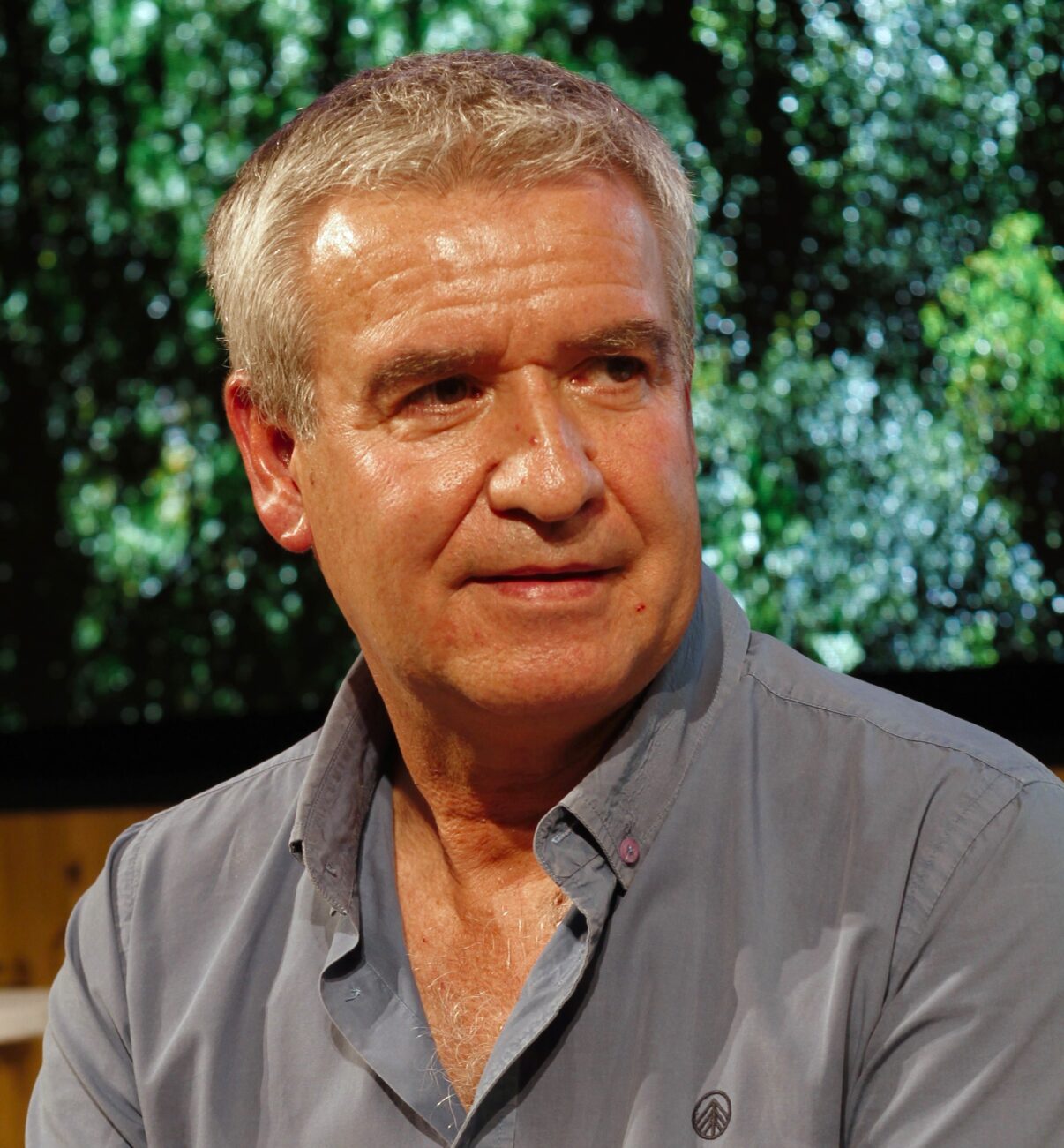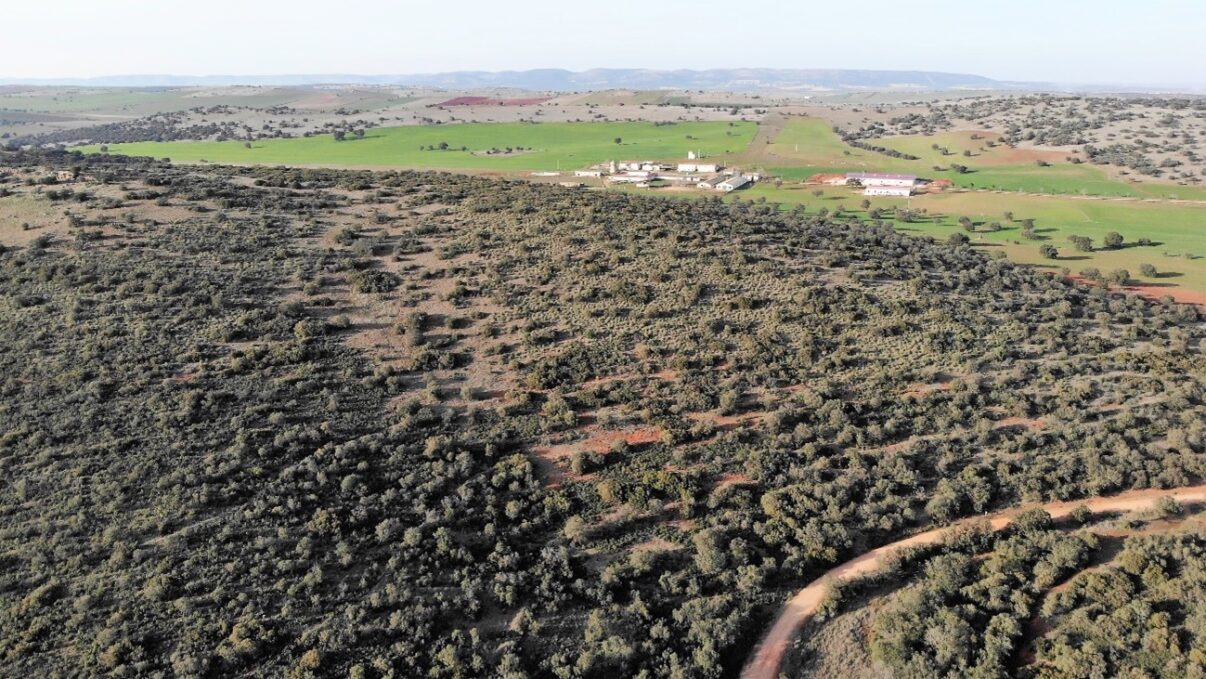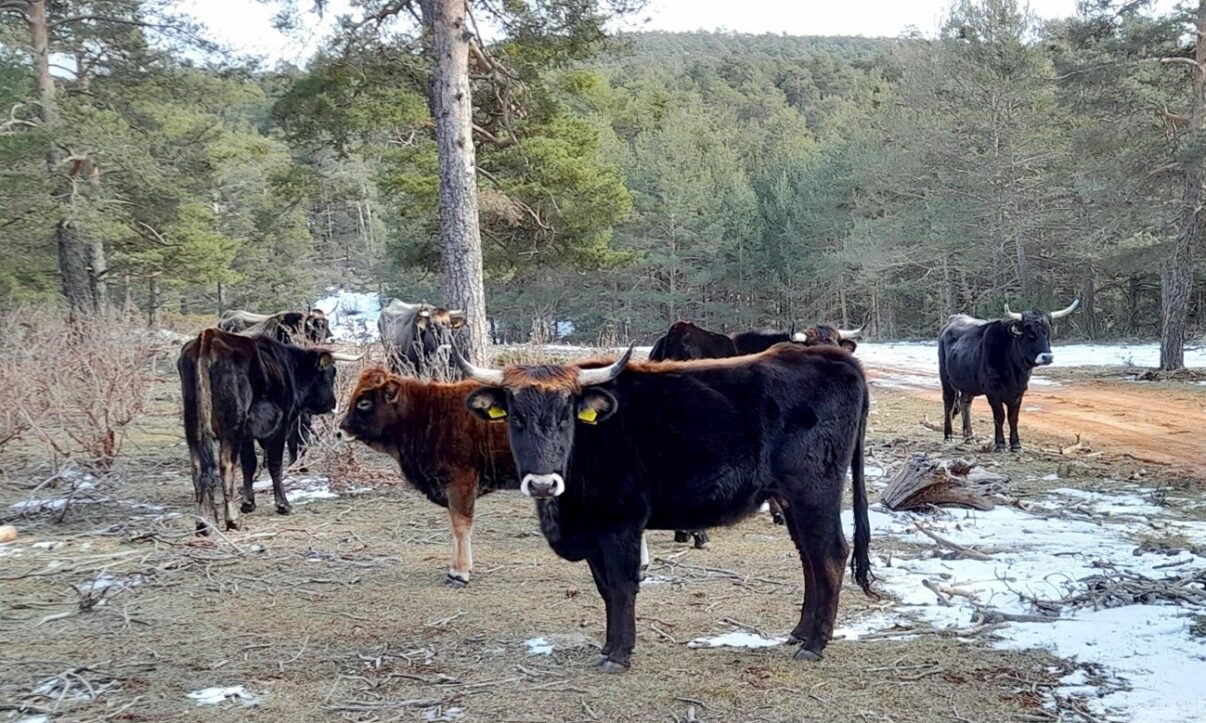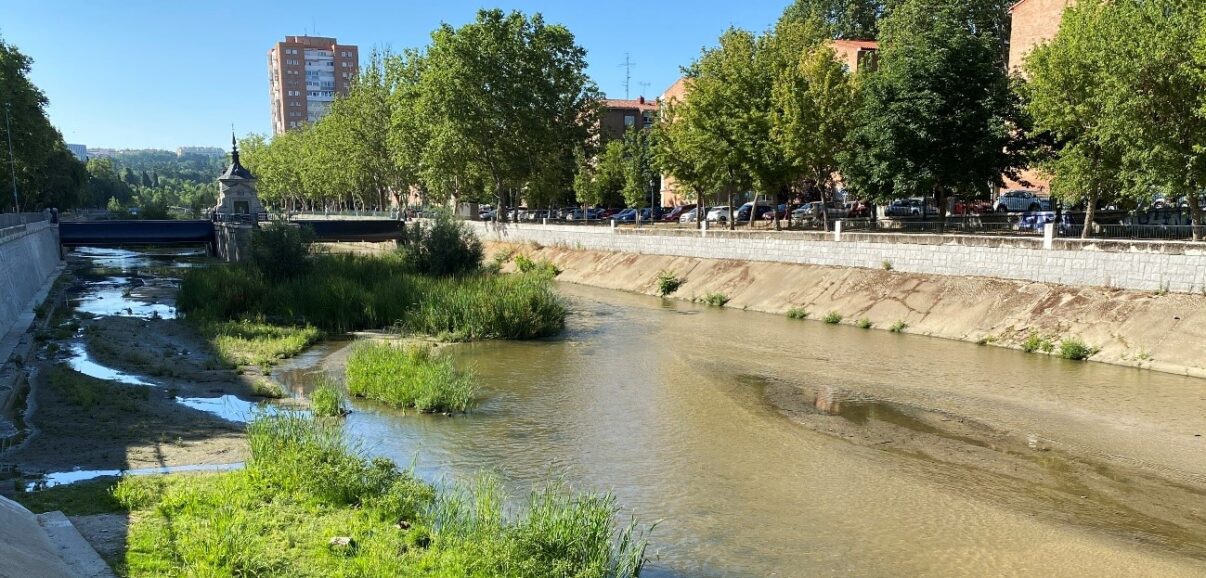José María Rey Benayas is Professor of Ecology at the University of Alcalá and Chairman of the Board of Trustees of the Fundación Española de Renaturalización – Rewilding Spain. With this article on the prospects for rewilding in Spain we launch our new blog section, where we will deal in more depth with different aspects related to our work and the Iberian Highlands rewilding initiative.

The concept of rewilding was created in the field of environmental activism, but was quickly formulated and transferred to Conservation Biology and, later, to Restoration Ecology. The term was coined by Dave Foreman, founder of the Rewilding Institute, in 1990. Soulé and Noss (1998) defined and expanded the term as the “scientific argument for restoring wild nature based on the regulatory role of large predators and large, strictly protected core reserves (wilderness), connectivity and keystone species”. We can call this definition “the three Cs rule”, corresponding to the initials of carnivores (the large predators), core reserves and corridors (connectivity), plus the concept of keystone species. Nowadays, the concept refers to both a nature conservation strategy and a way of restoration.
The conceptual framework of rewilding emphasises the restoration of natural processes, particularly connectivity, food chains and natural disturbances. It considers the ecosystem as a whole that, with initial strategic restoration actions based on the management of these three main dimensions or axes, is helped to recover on its own and to sustain itself with little additional effort, with positive consequences for humans and the ecosystems themselves.
Rewilding is often considered synonymous with wildlife reintroduction or ecological replacements with species analogous to extinct native species, particularly medium and large herbivores, carnivores and engineered species. This is because the reintroduced or replaced fauna, in addition to recovering these species, induces the secondary recovery of many other associated fauna and flora species (decomposers of excrement, specific parasites, symbionts and colonising species that take advantage of the new niches created or regenerated by their activity) and also recovers critical processes beyond the trophic interactions they establish. For example, herbivores affect vegetation structure and regeneration, disperse seeds and create environmental heterogeneity, which in turn regulates the spread of fires. Reintroductions and ecological replacements are a tool rather than an end to rewilding. We are challenged to contribute to not confusing (re)introductions and rewilding and not to base rewilding exclusively on wildlife (re)introductions.
As well, rewilding should not be conceived as an “all or nothing” process, but as a continuum that recovers the functionality of ecosystems upt to a higher or lower degree. In fact, the aims of rewilding urban ecosystems and agro-ecosystems are far from “full rewilding” or the recovery of biodiversity and processes characteristic of natural ecosystems. Thus, we can recognise the “possibilistic” rewilding of a territory, in which some parts of it could be genuinely renaturalised, while other parts could only be subject to the recovery of biodiversity and processes to a low degree.
What should be the scope of rewilding?
I see three main types of areas of restoration action, which are supported by various rewilding strategies and techniques, some of which lead to well-recognised types of rewilding. The main areas are as follows:
1. Genuine rewilding in relatively well-preserved areas with little human pressure.
This can be based on both spontaneous or passive rewilding and trophic rewilding. Spontaneous rewilding refers to ecological succession following the removal of a disturbance, often with anthropogenic origin. In terrestrial ecosystems, passive rewilding is mainly related to the natural regeneration of shrublands and forests and is by far the main global driver of restoration. Trophic rewilding is mainly based on species reintroduction or ecological replacements to restore top-down trophic interactions and associated trophic cascades, which promotes more biodiverse and self-regulating ecosystems. Typical examples in Spain are the reintroduction of predators such as the brown bear and the Iberian lynx, herbivores such as the Iberian ibex, and scavengers such as bearded vulture and Cinereous vulture. An example of this area is the Iberian Highlands rewilding initiative undertaken by Rewilding Europe and our own organisation.

2. Agricultural rewilding.
From a conventional perspective, agriculture and livestock farming are typically considered a disturbance whose cessation triggers spontaneous rewilding that may or may not be accompanied by restorative interventions by humans. The book Wilding: the Return of Nature to a British Farm (Tree, 2018) revealed to a wide audience the potential of agricultural rewilding as a perspective based on livestock systems. Recently, Corson et al. (2022) have revisited this concept, placing it between agroecology and rewilding. Agricultural rewilding through land sharing can be achieved through multiple simultaneously applied good agricultural practices and other habitat enhancement actions for biodiversity, as FIRE, in collaboration with IRIAF, is currently testing in its agroecological and forestry restoration field laboratory La Nava del Conejo.

3. Urban rewilding.
This refers to the creation or facilitation of wild biodiversity, natural elements and processes in urban centres, which are part of the urban green infrastructure as a whole. Examples include green roofs and green walls with native vegetation; the replacement of lawns with spontaneous grasslands or flowering meadows planted with native species; the non-eradication of spontaneous grasses in parks, gardens and allotments; the local reintroduction of wildlife species such as peregrine falcons and other birds of prey; the removal of dams in urban river sections (e.g. Manzanares River as it flows through Madrid); and the installation of structures to attract wildlife, such as bird nesting boxes; bat shelters; gecko shelters in trees, facades and even integrated into buildings; hedgehog shelters on the ground; insect hotels; standing dead trees; wood piles; aromatic spirals; rockeries and naturalised ponds, among others. Urban landscaping is increasingly using rewilding.

Great opportunities
There are great opportunities for rewilding in Spain. The main opportunity – spontaneous rewilding- has already occurred and continues to occur today, as 24% of the area under extensive livestock farming has been taken out of cultivation or grazing over the last 60 years. Abandoned agricultural land is colonised by vegetation and wildlife. However, in many places, in order to accelerate the progress of rewilding, ad hoc silvicultural actions such as re-vegetation would be necessary. Similarly, full recovery of wildlife-driven processes would require reintroductions (e.g. large carnivores such as bear and key herbivores and scavenging species) and ecological replacements, sometimes with domestic or semi-domestic breeds (e.g. analogues of extinct aurochs and wild horses and donkeys). Reintroductions and ecological replacements are a controversial issue even within the scientific community, and IUCN guidelines on this matter should be observed. Some 740,000 hectares of agricultural land that had been taken out of cultivation and pasture in Spain were reforested with EU CAP aid in the 1990s. The lack of forest management has in many cases produced homogeneous and not very diverse stands that are vulnerable to environmental risks such as fires and pests. These reforestations can be rewilded through appropriate silvicultural management, which may include thinning, pruning and weeding, as well as strategic management of wild and/or domestic herbivores, botanical enrichment through sowing and planting, and the introduction of shelter and nesting features for wildlife (birds and bats, for example), among other actions.
Rewilding as a consequence of restoring or improving ecological connectivity in terrestrial systems can occur through passive or active revegetation that merges patches of natural vegetation or creates ecological corridors or stepping stones. In agricultural landscapes, the planting of forest islands or patches, hedgerows and even individual trees will contribute significantly to the dispersal of many species and the provision of multiple ecosystem services. Similarly, the demolition of structures such as dams and dykes will restore the longitudinal and transverse connectivity of rivers and floodplains, i.e. a natural disturbance will also be restored.
The recovery of the natural disturbance regime is often difficult to accept from a social perspective, especially in environments with human presence. Therefore, although the preferred action to restore fire would be the non-intervention in natural fires, it will usually be necessary to settle for prescribed burning. It should be kept in mind that the frequency of fires has increased in many areas of Spain, going from being a disturbance with a natural regime to becoming a negative environmental impact due to their excessive recurrence. In aquatic systems, the removal of canals and drains will also contribute to the recovery of floodplains and wetlands. Alternatively, in aquatic systems, flow restoration and functional wetland restoration can be envisaged. In any case, the restoration of natural disturbances must not compromise people’s lives.
Agricultural rewilding (Spain’s usable agricultural area is more than 23 million hectares, of which almost 17 million are under cultivation) and urban rewilding (some 9,000 hectares are classified as urban land, half of them undeveloped) offer a world of opportunities that are only now beginning to be explored. The first, as indicated, considering the strategy of land sharing for biodiversity and production, needs the simultaneous application of good agricultural practices that promote multifunctional landscapes. The second requires ad hoc restoratio actions, mainly related to urban landscaping. These two types of rewilding are part of what we call “possibilist” rewilding and their aims are not the recovery of natural or semi-natural ecosystems, but the partial recovery of nature destroyed in environments because of anthropogenic intervention.
In his flagship book Rewilding Iberia. Explorando el potencial de la renaturalización en España (2020), Jordi Palau provides several examples and an exhaustive list of territories in Spain that are susceptible to genuine rewilding, i.e. the recovery or quasi-recovery of biodiversity and primary ecosystem processes. This list includes protected natural areas, particularly national parks, mountains belonging to the Autonomous National Parks Organisation, Ministry of Defence estates and some hunting estates of more than 5,000 hectares.
Economic opportunities
In general, economic opportunities around ecotourism, sustainable forestry and sustainable agriculture, among other activities, are critical for rewilding. Renaturalisation implies a paradigm shift in the relationship of humans with nature that will only be possible if we understand the co-benefits of nature, i.e. nature’s contributions to people in the long term, including mitigating climate change and reducing biodiversity loss. We are currently living in a favourable moment for rewilding in the world, and particularly in Europe, with international and regional policies favouring it and funding from different sources, public and private. We must not miss this train.